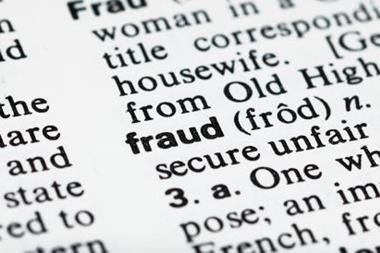The way that witness evidence is collated and presented can affect outcomes in the fight against fraud.
Insurers and solicitors who are defending claims are often reluctant to approach witnesses and other third parties directly to check the facts.
There is sometimes a misplaced belief that a claimant's witnesses cannot be contacted, especially where evidence relates to the claimant's employment. This is not so.
Verbal evidence is key
On the contrary, verbal evidence from witnesses can be crucial in defeating suspicious claims. DWF LLP have won a number of cases for insurers on the basis of what third parties have said. One such case was that of Steven Roberts v Caethle Farm Holiday Park, which was tried in Liverpool in February this year.
The claimant injured his knee when his foot went through balcony decking at a chalet park. His personal injury claim was settled quickly, however he claimed it also cost him a lucrative employment opportunity.
The claimant, a full-time business development consultant, was also a martial arts expert and claimed he had been offered a £20,000 a year part-time role by a security company training personnel for racing teams, in addition to his full time job. His claim was initially £162,000, rising to £172,000.
DWF contacted the security company and was told that that the claimant had indeed been offered employment as the firm had won a major contract. He would be required to work three nights per week and Friday mornings. DWF considered this significant as he may not have been able to accommodate this second job because of the requirement to work Fridays. The DWF solicitor handling the claim prepared a detailed note describing the conversation and subsequently prepared a witness statement exhibiting it.
It took over two years for the case to come to trial. In the meantime the security firm denied the contract was secured and said they had intended to employ the claimant to try to secure it. They also denied saying he would be needed on Fridays.
A week before the trial the DWF solicitor received an anonymous call warning that she would be convicted of perjury. Undeterred, she gave evidence. It became apparent that her evidence was correct as various details could not have otherwise been known to her at the time. The claim was dismissed and the defendant awarded costs.
“There is sometimes a misplaced belief that a claimants witnesses cannot be contacted, especially where evidence relates to the claimants employment
In another case, that of Humphries v Matthews, part of the evidence rested on remarks the claimant made after an accident. He had threatened to pursue a personal injury claim if damage to his vehicle was not paid for. In a more recent case in Cardiff, evidence from an investigator who had spoken to a relative of the claimant and been told that the claimant and defendant were known to one another was sufficient to persuade the judge the claim was not genuine.
These cases demonstrate once again the importance of making detailed contemporaneous notes of conversations and events, even if their significance is not apparent at the time. The notes should be typed onto a computer system rather than simply handwritten.
Statement of truth
A subsequent witness statement, bearing a Statement of Truth can then exhibit the attendance note, which is more likely to be treated by the court as accurate in its detail if it can be shown to have been created
contemporaneously rather than for example, a witness statement which is made some time after the event. Attendance notes created electronically can also, if necessary, be proven by IT experts to have been created at a given point in time, which can also be crucial where knowledge of the content of the note is an issue.
In suspicious cases witnesses may not stick to their story or may reveal important facts which cast a new light on the case.
Evidence from conversations, while regarded as second best, may prove to be the defendant's secret weapon, offering a true account of events and exposing the witness’s lack of credibility.
Amy Jeffs is an associate with DWF.



































